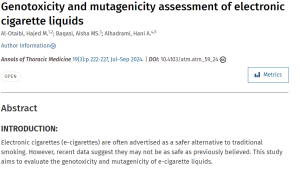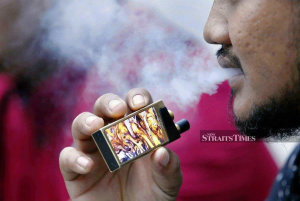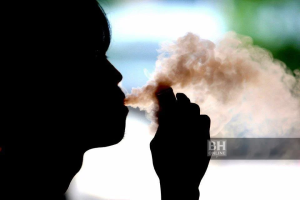Jeremy Staff, Jessica M. Mongilio, Jennifer L. Maggs, Mike Vuolo, Brian C. Kelly
Abstract
Aims
The aims of this study were to measure whether household bans on vaping were associated with lower odds of youth past-month vaping when compared with (1) otherwise similar youth whose households did not have a vaping ban (using coarsened exact matching); and (2) themselves in waves when their household did not have a ban (using hybrid panel models). We used the same analytical strategies to examine cross-sectional associations between household smoking bans and adolescents’ past-month cigarette smoking.
Design
This was a longitudinal study using data from a nationally representative sample of youth (age 12–17 years) in the Population Assessment of Tobacco and Health Study.
Setting
United States of America.
Participants
A total of 16 214 adolescents followed over 48 103 total observations (approximately three waves).
Measurements
Measurements comprised youth past-month e-cigarette and cigarette use and parent-reported household bans on vaping and smoking. Potential confounders were prior adolescent smoking, vaping, and other nicotine product use; parent current smoking, vaping, and other nicotine use; adolescent peer e-cigarette/cigarette use; parental monitoring; and demographic characteristics.
Findings
Before matching, smoking bans were associated with 46% lower odds of youth smoking [odds ratio (OR) = 0.54; 95% confidence interval (CI) = 0.41–0.70] and vaping bans with 37% lower odds of youth e-cigarette use (OR = 0.63; 95% CI = 0.50–0.80). However, households with and without bans differed significantly on all confounders before matching. After matching, household vaping bans were associated with 56% lower odds of youth vaping (OR = 0.44; 95% CI = 0.33–0.58). Results from hybrid panel models also revealed 37% lower odds of vaping in waves when youth lived in a vape-free household compared to waves when they did not (OR = 0.63; 95% CI = 0.50–0.78). Associations between smoking bans and youth smoking were not statistically significant after matching or when using hybrid panel models.
Conclusions
Household vaping bans appear to be associated with lower odds of past-month vaping among US adolescents, compared with similar youth whose households did not have a ban and to themselves in waves when their households did not have a ban.
Read more : Wiley










